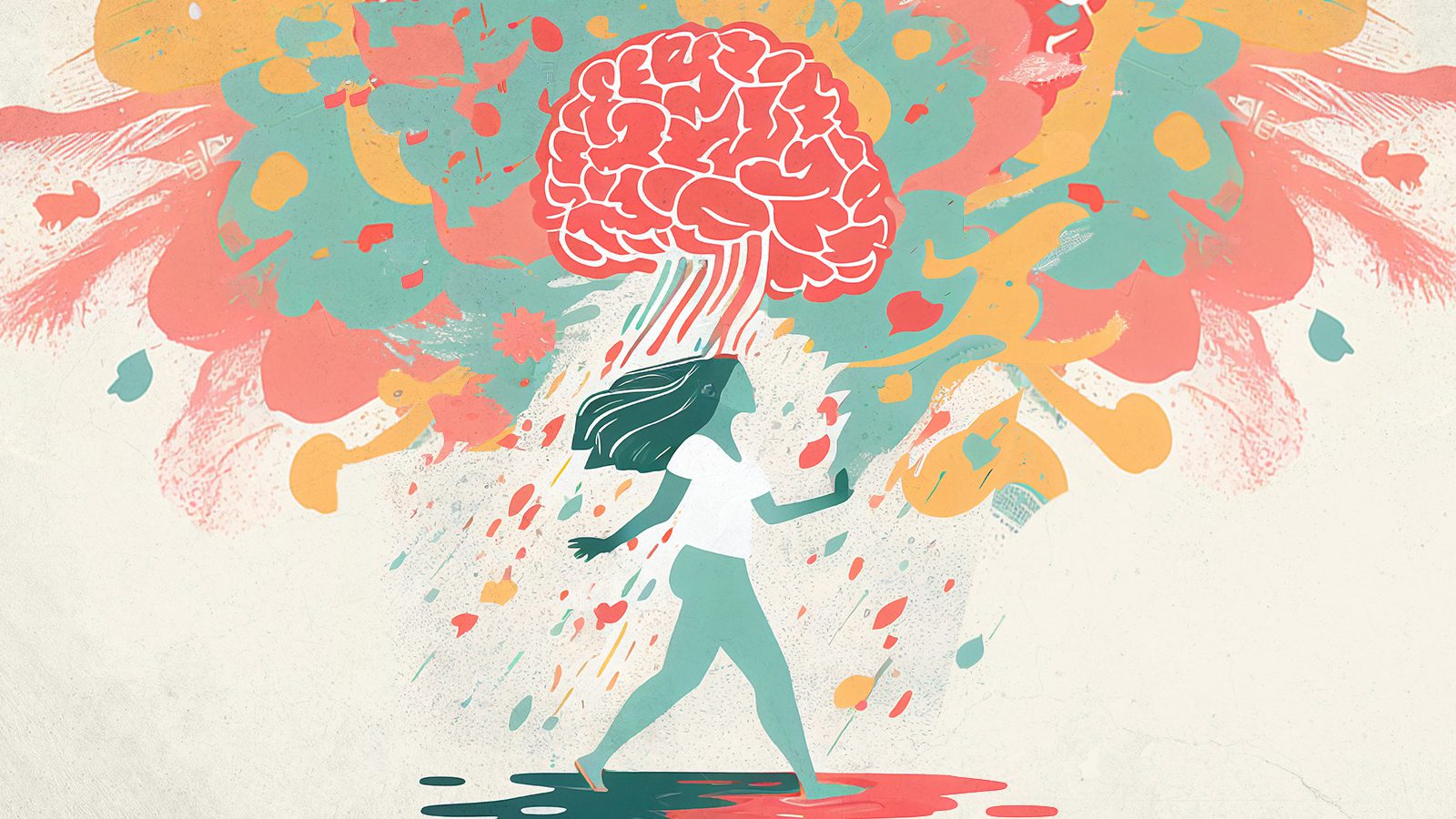Here’s how to lose negativity and embrace positivity.
Imagine waking up every morning imagining a bright ray of sunshine, regardless of the weather outside. Sounds delightful. Right? Maintaining a positive mindset can often feel like chasing a mirage in the rush of daily. Yet, unwavering positive thinking – inside each of us – lies within us. While a few come by positivity positivity, most must work to push out negative thoughts that cloud our days.
This article will discuss the intricacies of the human brain. It will also explain why sometimes we lean towards negativity. But the best part is information on how to train ourselves to remain positive even when the going gets tough.
Let’s embark on this enlightening journey together, shall we?
Understanding the Brain’s Negative Bias
Our brains are marvelous, intricate machines designed over millennia to ensure our survival. One of its most ancient features is the so-called “negativity bias.”
But what exactly is this bias?
Simply put, our brain tends to focus more on negative experiences than positive ones. Evolutionarily speaking, this made sense. Our ancestors needed to remember and learn from dangerous situations to stay alive. A rustling in the bushes could be a predator, so it was safer to assume the worst and be on guard.
However, this negativity bias often does more harm than good in our hectic world.
While we no longer face the same life-threatening dangers, our brains still give more weight to that one negative comment on social media. It also heavily weighs the minor criticism from a colleague or the fleeting moment of embarrassment in a social setting.
This disproportionate focus on the negative can cloud our perception, making it harder to recognize and appreciate the positive experiences surrounding us daily.
But here’s the silver lining: our brains are not made of stone. We can reshape our neural pathways thanks to a beautiful feature – neuroplasticity. We can each retrain our brains to focus on the sunny side with consistent effort and the right techniques.
Thus, we can offset the effects of the negativity bias. As we journey through this guide, we’ll explore actionable steps to harness the power of positivity, ensuring that the sunshine in our minds shines brighter with each passing day.
The Power of Positive Affirmations
Positive affirmations are more than just feel-good phrases. Instead, they’re powerful tools that can reshape our thought patterns. Affirmations are positive statements that challenge and combat negative thoughts. They can also stop self-sabotaging behaviors. They can influence our subconscious mind when repeated consistently, promoting self-belief and positivity.
Science shows how regular positive affirmations activate brain regions associated with self-related processing and valuation. That means that when we tell ourselves positive statements, our brain starts to believe and internalize them.
For instance, instead of succumbing to thoughts like “I can’t handle this,” try this instead:
“I am resilient and capable of overcoming any and all challenges.”
Over time, this simple shift can significantly change our mindset.
How to Use Positive Affirmations:
To put positive affirmations to work in your life:
- Be Specific: Instead of general statements like “I am happy,” try “I find joy in the little moments every day.”
- Make it Present Tense: Frame your affirmations like they’re happening now, such as “I am becoming more confident each day.”
- Feel the Emotion: Try to feel the emotion behind the words as you affirm genuinely. This emotional connection can amplify their impact.
Mindfulness and Meditation
Getting lost in a whirlwind of thoughts on a bad day is easy. Of course, many of these might lean towards the negative. That is where mindfulness and meditation come into play. These practices teach us to be present in the moment, observing our thoughts without judgment.
What Is Mindfulness?
Mindfulness is the art of paying attention to the present moment with an open and non-judgmental mind. By practicing mindfulness, we become more aware of our negative thought patterns and gently steer our focus towards more positive and constructive thoughts.
What Is Meditation?
On the other hand, meditation is a structured practice. It can take various forms, from guided sessions to deep breathing exercises. Regular meditation can reduce stress, increase feelings of well-being, and promote positivity. Even dedicating just a few minutes each day to meditation can make a noticeable difference in our mindset.
Are you new to meditation? Here are tips to get started:
- Start Small: Begin with just five minutes daily and gradually increase as you become more comfortable.
- Find a Quiet Space: Choose a location free from distractions where you can relax.
- Focus on Your Breath: Pay attention to your breathing. Notice and appreciate the rise and fall of your chest or the sensation of air entering and leaving your nostrils.
By integrating mindfulness and meditation into our daily routines, we can cultivate a more balanced and positive perspective, allowing us to navigate life’s challenges with grace and optimism.
The Role of Gratitude in Cultivating Positivity
Gratitude is a powerful emotion. It can transform our perspective and elevate our mood. By focusing on what we’re thankful for, we shift our attention away from what we lack or what might be going wrong and illuminate the abundance and goodness in our lives.
Even Harvard Health agrees about the benefits of practicing gratitude. Those who regularly count their blessings tend to have a more optimistic outlook, experience fewer negative emotions, and enjoy better physical health. Recognizing and appreciating the positive parts of life can rewire our brains to notice and savor positive experiences more readily.
Here’s how to cultivate a habit of gratitude:
- Keep a Positivity and Gratitude Journal: Dedicate a few minutes daily to jot down three things you’re thankful for. Over time, you’ll find yourself actively seeking out positive moments.
- Express Thanks: Whether a simple “thank you” to a colleague or a heartfelt note to a loved one, expressing gratitude strengthens social bonds and reinforces positive feelings.
- Mindful Reflection: Take moments throughout the day to pause and appreciate the beauty and goodness around you, from a serene sunset to a kind gesture from a stranger.
Surround Yourself with Positive Influences
The company we keep plays a significant role in shaping our mindset. Positive social connections can buffer against stress, provide support during challenging times, and amplify our joys. On the other hand, constantly being around negativity can drain our energy and skew our perspective.
It’s essential to curate our social environment. So get out and mingle with those who uplift, inspire, and encourage you. While it’s unrealistic to expect positivity at all times, being around those who generally exhibit a positive outlook and constructive behavior is beneficial.
Here’s how to foster positive social connections:
- Evaluate Your Circle: Reflect on the people in your life and consider how they influence your mindset. Prioritize relationships that bring joy, understanding, and positivity.
- Seek Out Positive Communities: Join clubs, groups, or organizations that align with your interests and values. Engaging with like-minded individuals can be a source of inspiration and positivity.
- Limit Exposure to Chronic Negativity: While being there for friends and family in need is essential, it’s also crucial to set boundaries if someone consistently brings negativity into your life.
Remember that positive thinking is contagious. By surrounding ourselves with positive influences, we enhance our well-being. We also display the power of positivity to those around us.
The Impact of Physical Activity on Positive Thinking
Physical activity is not merely about building muscles or improving cardiovascular health. It is also a potent tool for enhancing our mental well-being. When we exercise, our body releases endorphins, often called “feel-good” hormones. These endorphins are pivotal in elevating our mood, reducing stress, and fostering a sense of positivity.
Research shows how people who engage in regular physical activity tend to have a more positive outlook on life, better stress resilience, and even improved cognitive function. The beauty of exercise is its versatility; whether it’s a brisk walk in the park, a rejuvenating yoga session, or an intense workout at the gym, the benefits for our mindset remain profound.
Here’s how to integrate physical activity for positivity:
- Find an Activity You Love: You’re likelier to stick to a routine if you enjoy it. Explore different activities until you find one that resonates with you.
- Set Realistic Goals: Instead of going for perfection, focus on progress. Celebrate small victories along the way.
- Stay Consistent: Even short bursts of activity can make a difference. Aim for consistency over intensity to reap the long-term benefits.
Limiting Exposure to Negative Media
We receive a steady stream of information from various media sources. Staying informed is crucial. However, excessive exposure to negative news or sensationalized content can affect our mental well-being. It’s essential to strike a balance, ensuring we’re not overwhelming ourselves with negativity.
But prolonged exposure to negative media can lead to increased sadness, anxiety, or fear. By cutting back our media consumption, we can protect our mental space. Thus, we ensure that we feed our minds with uplifting and constructive content.
Here’s how to cultivate a positive media consumption habit:
- Set Boundaries: Allocate specific times for checking the news or social media. Avoid mindlessly scrolling or overindulging in harmful content.
- Choose Reliable Sources: Opt for news outlets that provide balanced and factual information, steering clear of sensationalism.
- Engage in Uplifting Content: Actively seek out positive stories, inspirational podcasts, or motivational videos. Fill your media diet with content that nourishes your soul and elevates your mood.
We can stay informed and maintain a healthy mindset by being mindful of our media consumption.
Final Thoughts on Training Your Brain to Be Positive
Throughout life, our mindset plays a pivotal role in shaping our experiences. While external factors might be beyond our control, our internal narrative is something we control.
Training the brain to be positive is not about denying the existence of challenges or setbacks. Instead, it’s about focusing on the silver linings, the lessons learned, and the opportunities that arise from adversity.
The journey toward positivity is continuous, filled with self-reflection, growth, and transformational moments.
As you embark on this path, be patient with yourself. Change doesn’t happen overnight. But with consistent effort and the right tools, you can train your brain to see the world more optimistically. Embrace the journey. Take time to celebrate the small victories. Let the power of positivity illuminate your life. Shine on!

















 Community
Community

